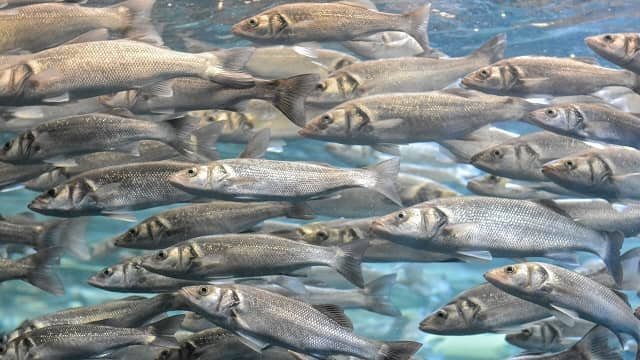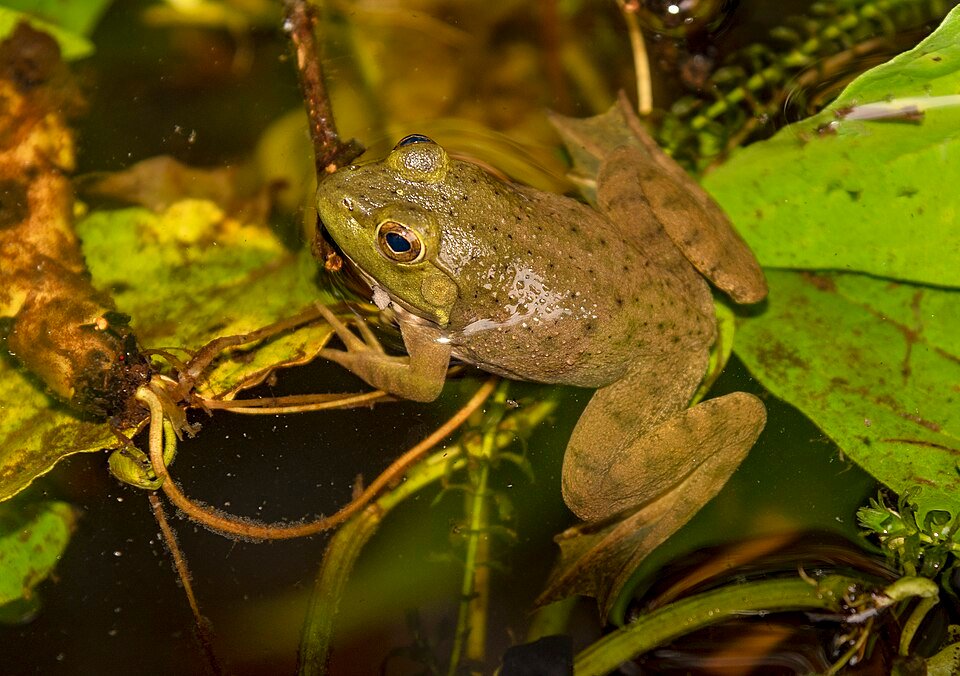
Climate change is putting pressure on traditional aquaculture practices, especially in regions facing water scarcity. A promising solution is polyculture, where multiple aquatic species are raised together in a single system. This approach can not only increase overall production but also improve resource utilization.
A recent study by scientists from The American University in Cairo, Kafrelsheikh University, and RWTH Aachen University tested the polyculture of European seabass and Nile tilapia in a Recirculating Aquaculture System (RAS) using brackish water (12 salinity) to determine the effects of polyculture on growth performance, feed utilization, and blood variables.
The findings provide valuable insights for sustainable and efficient aquaculture.
Polyculture: A Sustainable Alternative
Polyculture involves raising multiple fish species together in aquaculture systems, including RAS, and emerges as a promising solution. It improves resource utilization and profitability by:
- Water use optimization: Polyculture efficiently utilizes available water resources, leading to higher overall production.
- Minimizing environmental impact: Diversification reduces the negative effects of intensive farming by allowing different species to use different resources.
The success of polyculture depends on choosing compatible species. Factors such as salinity tolerance, feeding behavior, and resource competition must be considered. Tilapia, for example, has been widely used in polyculture experiments, such as tilapia-marine shrimp.
European seabass and Nile tilapia: A Perfect Combination?
- Euryhaline species: Both European seabass and Nile tilapia can thrive in a wide range of salinity, including brackish water (a mix of freshwater and saltwater). This makes them ideal for RAS, which can utilize readily available brackish water resources.
- Market value and adaptability: European seabass offers high market value and is increasingly being cultivated in Egypt due to its adaptability to brackish water.
- Productivity and stress tolerance: Nile tilapia is known for its high productivity, profitability, and tolerance to breeding stressors. It can also tolerate brackish water, making it suitable for arid regions with limited freshwater resources.
- Dietary differences: Seabass, a carnivore, requires animal protein sources, while omnivorous tilapia uses both plant and animal proteins. This dietary difference minimizes resource competition and potentially improves feed utilization in a polyculture system.
The Experiment: Diversifying the Tank
The researchers divided the fish into five groups:
- Group 1 (G1): 40 European seabass
- Group 2 (G2): 30 European seabass + 10 Nile tilapia
- Group 3 (G3): 20 European seabass + 20 Nile tilapia
- Group 4 (G4): 10 European seabass + 30 Nile tilapia
- Group 5 (G5): 40 Nile tilapia
The experiment monitored water quality (oxygen levels, ammonia) and fish health throughout the study.
Results: Both Species Win
The study found that polyculture tanks (G2, G3, G4) generally had higher nutrient levels in the water compared to the single-species seabass tank (G1). This indicates higher biological activity but was within manageable levels.
Stay Always Informed
Join our communities to instantly receive the most important news, reports, and analysis from the aquaculture industry.
Interestingly, the results differed for each fish species:
- European seabass: Performed best in G4 (with 10 seabass and 30 tilapia). They showed better growth rates and lower feed conversion ratios (FCR, a measure of feed efficiency) compared to tanks with higher seabass densities (G1, G2, G3).
- Nile tilapia: Thrived in G2 (with 30 tilapia and 20 seabass). They had superior growth and FCR compared to tanks with fewer tilapia (G3, G4, G5).
The study also revealed that the total fish biomass (combined weight) was highest in G3, indicating the potential for higher overall production through polyculture.
Fish Health and Composition
Importantly, no significant differences were observed in somatic indices (indicators of body condition) across all groups. This suggests that polyculture did not negatively affect fish health.
Analysis of fish composition showed positive changes. European seabass showed a significant increase in crude protein and total lipids compared to initial composition. Similarly, Nile tilapia showed an increase in total lipids. These findings suggest potential nutritional benefits associated with the polyculture system.
Additionally, no significant variations were observed in blood protein levels, albumin, globulin, ALT (alanine aminotransferase), and AST (aspartate aminotransferase) levels among the groups. This indicates that polyculture did not compromise the overall health status of the fish.
Conclusion: Polyculture for a Sustainable Future
This study demonstrates the effectiveness of polyculture for rearing European seabass and Nile tilapia in RAS using brackish water. This approach offers several advantages:
- Increased production: Polyculture can potentially produce more fish with the same amount of water compared to single-species monoculture systems.
- Better resource utilization: By combining species with complementary feeding niches, polyculture can optimize the use of nutrients available in the water.
- Reduced environmental impact: Brackish water RAS offers a sustainable and efficient alternative to traditional aquaculture methods.
Overall, these findings highlight the potential of polyculture as a strategy for sustainable and productive aquaculture, particularly in regions facing water challenges. Further research can explore the application of polyculture to other fish species and adjust population ratios for optimal production.
Contact
Mahmoud A.O. Dawood
The Center for Applied Research on the Environment and Sustainability, The American University in Cairo, 11835, Egypt.
Email: Mahmoud.dawood@agr.kfs.edu.eg
Hani Sewilam
Department of Engineering Hydrology, RWTH Aachen University, Aachen, Germany.
Email: sewilam@lfi.rwth-aachen.de
Reference (open access)
Dawood, M. A., Madkour, K., & Sewilam, H. (2023). Polyculture of European seabass and Nile tilapia in the recirculating aquaculture system with brackish water: Effects on the growth performance, feed utilization, and health status. Aquaculture and Fisheries. https://doi.org/10.1016/j.aaf.2023.11.001
Editor at the digital magazine AquaHoy. He holds a degree in Aquaculture Biology from the National University of Santa (UNS) and a Master’s degree in Science and Innovation Management from the Polytechnic University of Valencia, with postgraduate diplomas in Business Innovation and Innovation Management. He possesses extensive experience in the aquaculture and fisheries sector, having led the Fisheries Innovation Unit of the National Program for Innovation in Fisheries and Aquaculture (PNIPA). He has served as a senior consultant in technology watch, an innovation project formulator and advisor, and a lecturer at UNS. He is a member of the Peruvian College of Biologists and was recognized by the World Aquaculture Society (WAS) in 2016 for his contribution to aquaculture.




